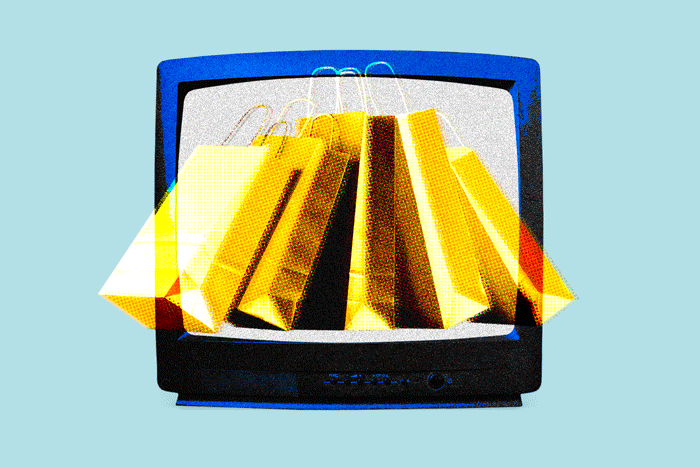
Viewers binge-watching The Boys or Reacher on Prime Video might find themselves invited to purchase something between episodes.
At its Unboxed conference in Austin last month, Amazon Ads rolled out interactive shoppable ads for Prime Video in North America. Consumers can add items from the ads to their Amazon carts, ask Amazon to notify and email them about products, or book appointments with businesses using their remote or by scanning a QR code.
The interactive ads are just the latest addition to a growing shoppable TV realm as streamers like Netflix, Paramount+, Peacock, and Roku aim to make it easier for consumers to make purchases directly from ads on their TV screens.
As the ad formats grow in popularity, experts told us that not all shoppable ads are equally compelling and that there are various challenges to achieving broad buy-in from consumers. The proliferation of the ad formats means that—like it or not—ad-supported streaming platforms are beginning to look a little more like QVC and HSN, the home-shopping networks that popularized the practice of selling directly to consumers through TV programming.
“Bringing the ads into either the content itself or ads that are running in between or throughout the content, and then being able to actually action on that and shop, is a huge trend that streamers, social, and brands should be really leaning into,” said Jana Arbanas, vice chair and US telecom, media, and entertainment sector leader at Deloitte.
Popularity contest
Shoppable ad formats are generating interest from clients, Jon Morgenstern, EVP and head of investment at VaynerMedia, told us. One tool attracting particular client interest, he said, is Roku Ads Manager, a self-service ads platform that debuted in September and is integrated with Shopify, enabling Shopify merchants to reach consumers through shoppable ads.
Amazon’s shoppable ad formats, which also include shoppable carousel ads where viewers will be able to browse items during ad breaks, are also being noticed by VaynerMedia clients, he said.
Streamers with newer ad-supported tiers are breaking into ways to drive sales from screens. In August, Netflix announced a partnership with Google for its hit series Emily in Paris, where viewers were able to pull out their phones and use Google Lens to scan characters’ outfits and find similar items.
Get marketing news you’ll actually want to read
Marketing Brew informs marketing pros of the latest on brand strategy, social media, and ad tech via our weekday newsletter, virtual events, marketing conferences, and digital guides.
Not all shoppable ad offerings are made equal, though, and Arbanas said some are less user-friendly than others. QR codes, she said, can be a challenge since viewers only have so long to find their phones, open the camera, and scan the QR code before it disappears from the screen.
“They really need to be thinking about friction and reducing friction and trying to find something that’s a little bit more accessible or just makes it more easy for the consumer,” she said.
While some, like Amazon, are looking to connect customers’ carts to the screen, other streamers are still embracing QR codes as the main tool for bringing shopability into content. During the Olympics, Peacock debuted Virtual Concessions, where viewers could scan an onscreen QR code to order snacks and beverages. QR codes are also a mainstay of another Peacock ad product, Must ShopTV, which lets viewers purchase clothes and other products featured in Peacock content.
Climb the mountain
It’s no secret that streamers are integrating shopability into content, but there’s a ways to go before shoppable ads can potentially become a mainstay, experts told us. The technology and the experience is still new, Morgenstern said. With Virtual Concessions, for example, advertisers and consumers alike might need time to become more widely familiar with it, he said.
“Folks don’t expect it to have a gangbusters ROI,” he said. “It’s such a new behavior for consumers…It is somewhat QSR- or CPG-centric at the moment, and that was mostly for existing Olympics advertisers.”
With that said, Arbanas said consumers might be more receptive to shoppable ads during major shopping events like Black Friday or Cyber Monday—especially if there are any big sales attached.
“In order for it to have staying power, the deals have to be really tremendous,” she said. “Consumers have to feel like they’re getting a real bargain to be able to stop what they’re doing and spend time on that.”
Read the full article here









